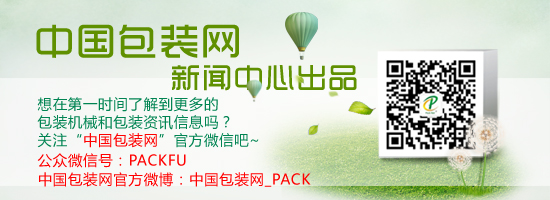"Scanning" has become part of the business slogan. What is reflected in the middle is the changes brought about by the development of the mobile Internet for product packaging. When the two-dimensional code became part of the product packaging, new methods were adopted for anti-counterfeit packaging.
QR code hot sweeping packaging market
The two-dimensional bar code is actually a kind of matrix code for optical sensor recognition. It uses a certain geometrical pattern to record data symbol information in a black and white pattern distributed in a plane (two-dimensional direction) according to a certain rule; it is ingenious in code preparation. Land use constitutes the internal logic of the computer.
The concept of "0" and "1" bit streams uses a number of binary geometric entities to represent literal numerical information, which is automatically read by an image input device or an optoelectronic scanning device to achieve automatic processing of information: it has a bar code Some commonalities of technology: each code has its own specific character set; each character occupies a certain width; has a certain check function. At the same time, it also has the features of automatic identification of different lines of information, and the ability to handle graphic rotation changes. In many kinds of two-dimensional barcodes, commonly used code systems are: DataMatrix, MaxiCode, Aztec, QRCode, Vericode, PDF417, Ultracode, Code49, Code16K, etc. The QR code was invented by Denso-Wave Corporation of Japan in 1994. QR comes from the abbreviation of the English "QuickResponse", which means the quick response, from the inventor's hope that the QR code can be quickly decoded. QR codes are most common in Japan and Korea; and they are currently the most popular two-dimensional space bar codes in Japan.
The labeling of food packaging introduces the traceability of raw materials in the production process, the real-time check of the circulation links is realized, and the consumer terminal can know the product information at a glance - relying on a small two-dimensional code can realize the full traceability of food information. As soon as possible, the information is exhausted."
The raw materials provided by the raw material supplier are provided with two-dimensional code labels, and the labels record the information of the raw material manufacturer and the use period. The food production plant reads the two-dimensional code when raw materials are put into the warehouse and records the raw material production information in the database. A two-dimensional code label is attached to the raw material, and the two-dimensional code label includes information such as a raw material number, a raw material name, a storage date, and a supplier.
When formulating a production plan, the plan includes the name of the product being produced, the number of containers used, the raw materials used, the weight, the order of inputs, and the material number. The content of the production plan is entered in the QR code, and the label with the code is attached to the sub-packed pocket.
Read the two-dimensional code on the packaging bag, and fill the ingredients into the dispensing bag according to the instructions displayed on the computer screen (for example, 20 kg of soybeans with material number 051). Then read the QR code on the raw material bag, and transfer the used raw material data to the computer.
The raw material is poured into the brewing container, and after the production is completed, the packaging time and the packaging equipment number are marked on the packaging. The manufacturing data at this time is: product name, adjustment container number, manufacturing date, manufacturing start time, manufacturing end time, and package device number.
The time of manufacture of each batch of food and the number of packaged equipment are recorded in the database. According to the package time printed on the food bag and the package device number to determine the number, it can finally use the specific raw material information.
Anti-counterfeit packaging emphasizes the role of two-dimensional code
With the economic development, many products are directly facing the danger of being counterfeited while the sales volume is rising. This phenomenon has occurred from time to time, which not only presents security risks, especially food, but also damages the interests of consumers and businesses.
As early as 2000, China Article Numbering Center actively tracked the relevant work of international food safety traceability, and introduced the concept of food safety retrospection into China as early as possible. For more than 10 years, through continuous research on traceability technology and item coding programs that are in line with China's national conditions, the food safety traceability system centered on bar code technology has achieved certain results.
In order to promote the standardization of food safety traceability in China, China's Article Numbering Center has completed the development of a number of implementation guidelines such as "General Specifications for Food Traceability" and "Code for the Identification and Labeling of Food Traceability Information". This has played a positive role in improving China's food quality safety and traceability system, and has also accelerated our country's integration with international standards. Then the emergence of two-dimensional code has undoubtedly become a right-hand man of security packaging.

180Gsm Watercolour Pad Drawing Paper,Watercolour Pad Drawing Paper,Acrylic Wood Pulp Paper,2 Sizes Drawing Notebook
Zhoushan Shenglan Trade Co., Ltd.  , https://www.seamiart.com